

Fortune with Fugu
|
Did you know that Shimonoseki city in Yamaguchi Prefecture produces the most amount of fugu (pufferfish) in Japan? It is even called “fuku”, meaning “good fortune”, in Shimonoseki city. Majority of us probably associate poison with pufferfish though, and wonder why it is so popular in Japan.
Contrary to what you may expect, Japanese people have been eating pufferfish for many years, as far back as to before the 4th Century BC, based on the excavated bones of pufferfish found in Japan. For Shimonoseki city in particular, pufferfish bones were discovered from Yayoi period ruins there. It was only later on during the late 16th Century when a drastic change occurred. The feudal warlord Hideyoshi Toyotomi, also known as one of the three “Great Unifiers” of Japan, saw that many of his troops were poisoned after eating pufferfish. Hence, he issued a ban on pufferfish consumption. This ban remained in place until the Meiji period. The ban was only lifted towards the end of the 19th Century, thanks to the first Prime Minister of Japan, Hirobumi Ito. At that time, he was served pufferfish in Shimonoseki city and was so impressed by its deliciousness that the ban was lifted in Yamaguchi Prefecture. The inn that served pufferfish also became the first officially-recognised pufferfish restaurant in Japan. Due to this incident, even as the ban was eventually lifted across Japan, Shimonoseki city remains as the most well-known place to enjoy pufferfish. Actually, there are around 350 types of pufferfish around the world, 35 of which can be found in the seas surrounding Japan, and 22 of which are served for consumption in Japan. As you might know, majority of them are poisonous, and the poisonous areas vary depending on the type of pufferfish. Therefore, only licensed chefs are permitted to serve pufferfish in Japan. During the preparation, the chef must remove the poisonous areas and extensively wash the blood away from the meat. The poisonous parts must also be burned or disposed of safely and appropriately. Among the edible types, tiger pufferfish is said to be the most delicious. Pufferfish is also known to be healthy, as it is high in protein and collagen, low in calories, and contains many vitamins and minerals. There are many ways to enjoy the taste of pufferfish. Perhaps the most popular way is to eat it as sashimi. The meat is sliced so thinly that one can see the pattern of the serving plate underneath. The meat has a firm, crunchy texture, and is usually dipped in ponzu (a citrus-based sauce), rather than soy sauce. Other ways include hotpot, rice porridge or deep-fried. The skin can also be eaten after being lightly boiled. Another edible part is the pufferfish roe. Its rich, creamy flavour comes out best when it is grilled or steamed. However, another unique dish is pufferfish roe pickled and fermented in rice bran, resulting in a strong umami taste. For people who like sake, you can also try hirezake (fin sake), which is hot sake flavoured with grilled fugu fin. Ideally, Shimonoseki city is the place to enjoy the best of pufferfish cuisine. However, you still have a chance even if you remain in Singapore. With effect from 31 August 2022, the restrictions on the importation of additional pufferfish byproducts, namely farmed pufferfish parts such as fins, skin and milt, from Japan to Singapore were lifted. So perhaps you will come across pufferfish being served in a restaurant near you! |
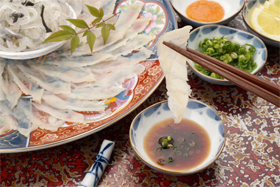 © Web Japan 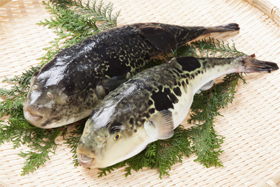 © Web Japan 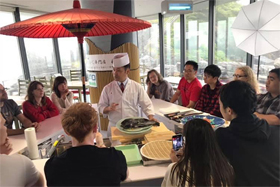 © All Nippon Fugu (Pufferfish) Association 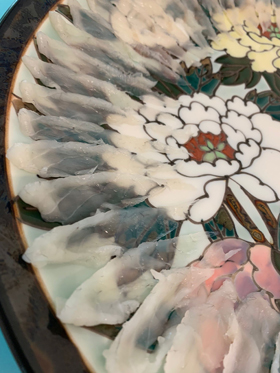 © JCC 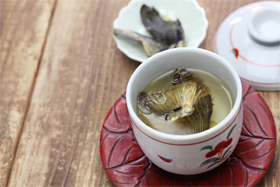 © Web Japan |
Resources
|
“Fugu Are Poisonous, But You Can Enjoy Their Great Taste Safely in Japan”. 2021. Web Japan. Accessed 24 November. https://web-japan.org/trends/11_food/jfd202101_fugu.html. “Blowfish”. 2022. IS JAPAN COOL?. Accessed 24 November. https://www.ana-cooljapan.com/destinations/yamaguchi/blowfish. “Fuku / Fugu (ふぐ)”. 2020. Food in Japan. https://foodinjapan.org/chugoku/fugu/. |
|
Japan Creative Centre 4 Nassim Road, Singapore 258372 +65 6737 0434 / jcc@sn.mofa.go.jp https://www.sg.emb-japan.go.jp/JCC/ Nearest parking at Orchard Hotel & Delphi Orchard |
 |